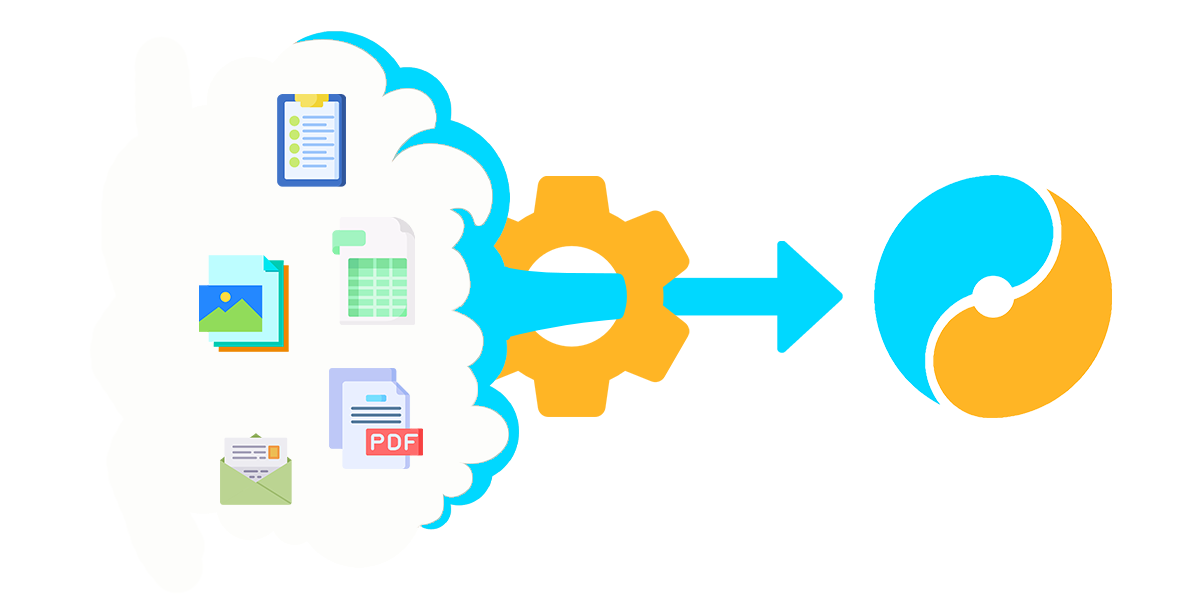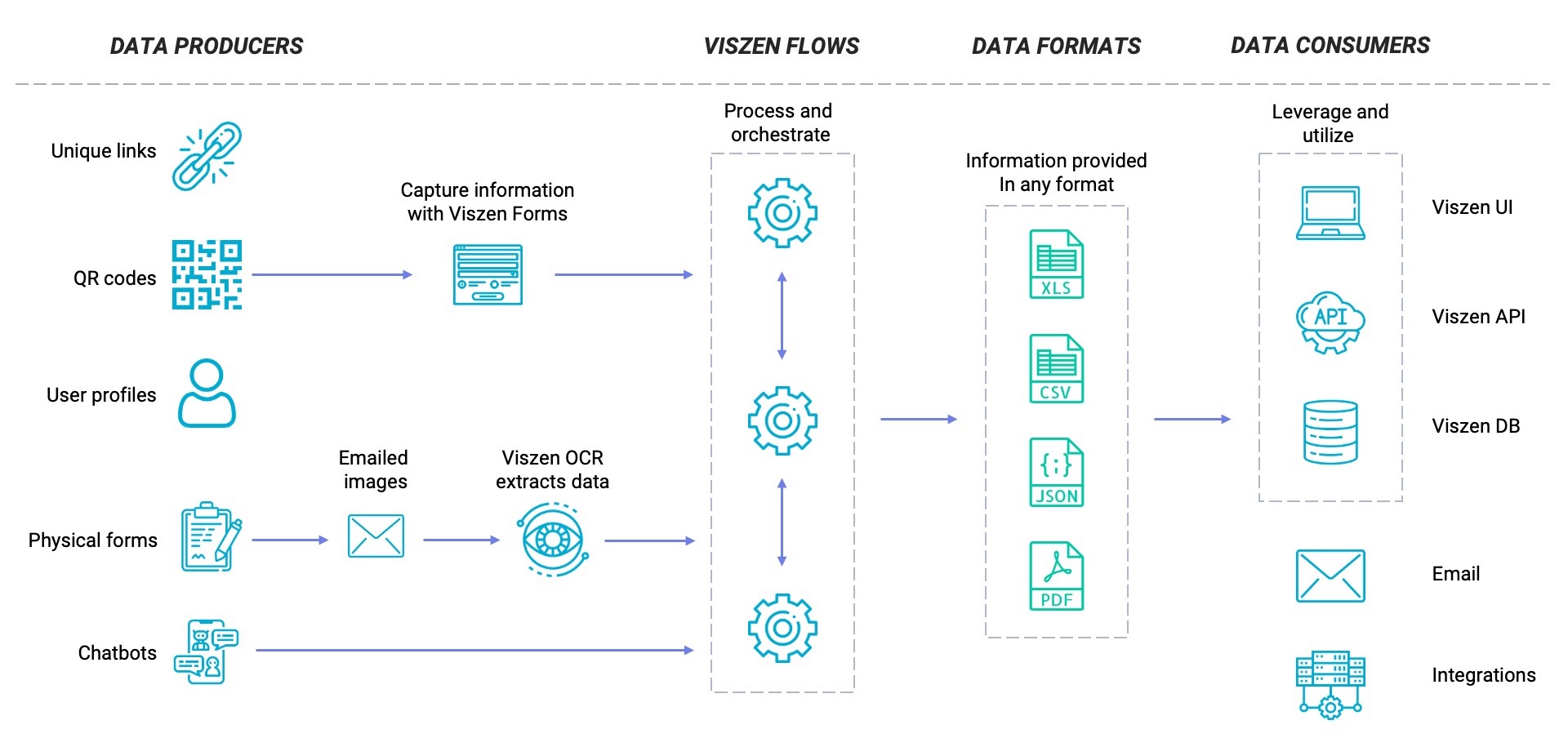Slaying disparate data and inefficient business processes
We’re living in the age of information. Organisations are generating massive amounts of information through their operations and interactions with their employees and customers. However, information is stuck in disparate formats and locations among different people within the organisation. Furthermore, information can be unreliable and error-prone due to unideal approaches in the capturing and processing lifecycle. This valuable information can be leveraged to improve efficiency of the business and make better decisions for more effectiveness.
- Data stuck in paper forms. Too many business activities rely on hardcopies of application forms, approval forms, and other transactional documents. Physical forms are cumbersome to complete, rely on the sharing of pens, clipboards, and other physical equipment, and require the data to be digitally captured manually if there’s any intent on integrating with technology.
- Data in scanned documents and photographs. Often paper documents and forms are scanned or photographed to be stored for processing, referencing, auditing, and other uses. Important information stuck in pictures or PDFs are no good in creating more automated and efficient business processes.
- Data in emails. Many transactions are encompassed in back-and-forth emails between customers and employees, or other stakeholders. This means that important information is stuck in the email inboxes of individuals and make it difficult to radiate that information to other functions in the business that need it.
- Data in Excel spreadsheets. Spreadsheets are sometimes underrated. Spreadsheets have made many businesses productive and successful over the years. However, as these businesses grow, the spreadsheets grow, and the lack of consistency grows as well. Managing information from disparate spreadsheets into a more centralised and accessible source is critical to improving the effectiveness of businesses.
- Data in PDF forms. One tool that has been useful to business, especially more recently, is the adoption of PDF documents where forms can be filled and signed digitally. Although this has helped create more digital interactions, the information is still stuck in those documents and not integrated to the larger ecosystem within the business.

Viszen aims to address the problems surrounding disparate data and information in a way that allows businesses to transition gracefully if legacy processes are critical to operation, or switch over to a digital ecosystem immediately.
Capturing information
Information lives in a variety of formats as discussed earlier. It’s paramount that data from all these sources can be structured, integrated, and processed by business rules or passed on to other systems to achieve business functions. Viszen enables automatic capturing of paper forms and digitisation of paper forms by exposing them as web forms, chatbots, and other structured interfaces to users. This approach promotes a user-centered approach in allowing data to be captured in a way that the user is already comfortable with. It also enables the validation of information which improves the quality and accuracy of the information captured from clients, employees, and suppliers.
Processing and storing information
Capturing data effectively is part of the battle. Disparate data still needs to be aggregated and processed or integrated into critical systems within the organisation. Viszen works with you to identify, plan, and execute on bridging the gaps between these systems.
Leveraging information
Information is useless unless it’s being leveraged to guide decisions or action on activities. Often the people or systems responsible for these activities require information to be provided in the relevant structure and format. Viszen provides raw or aggregated data to user interfaces, APIs, databases, and other output types in the structure that they expect.
The following diagram describes an overview of data inputs, information processing, and data outputs within the Viszen ecosystem.

The first step towards digitising your business is understanding the processes within it. One easy and hugely useful way to do this is mapping. We would like to help you with a commitment free mapping workshop to figure out what cogs in your business keeps the machine ticking, and what areas pose risks and opportunities.